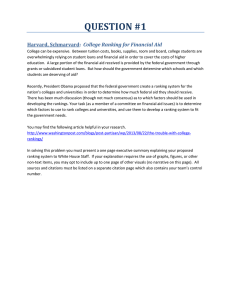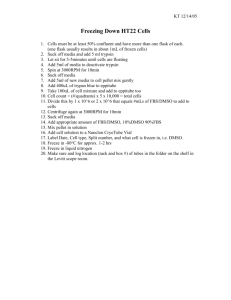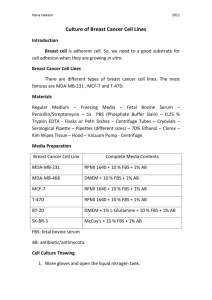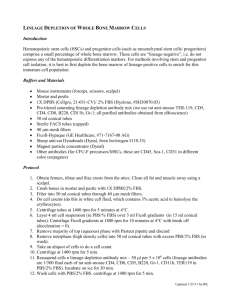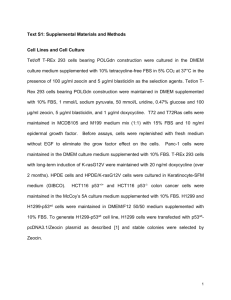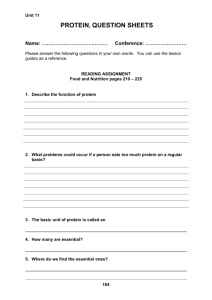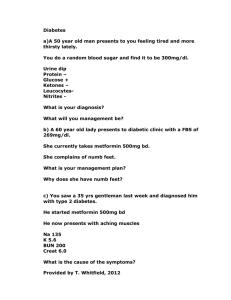Slide 1
advertisement
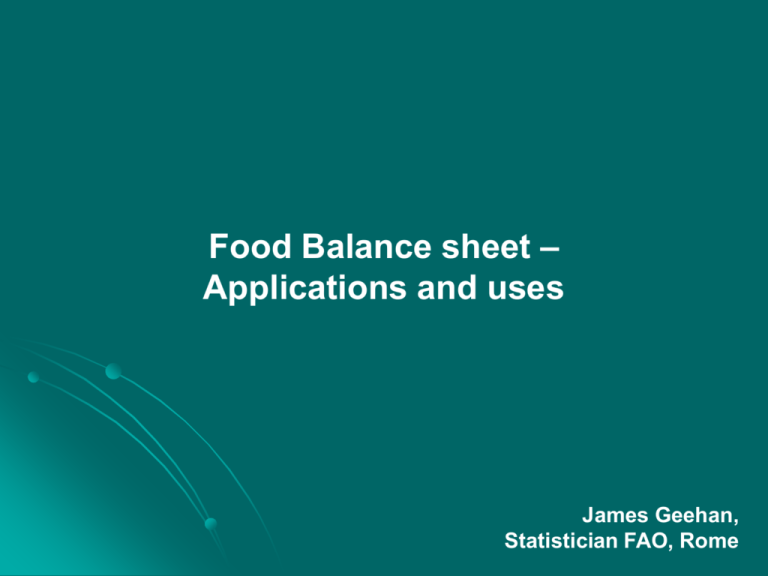
Food Balance sheet – Applications and uses James Geehan, Statistician FAO, Rome Recap: definition of Food Balance Sheets • The "Handbook for the Preparation of Food Balance Sheets" was published in 1949. Since then, FBS have been prepared and published by FAO on a regular basis. •Food Balance Sheets measure the average food availability for a specific referenced period. • They do not directly measure food intake or consumption due to wastage within the household (e.g., plate wastage). FBS should therefore be considered as measuring the ‘average food available for human consumption’. • They are extracted out of time series SUAs and report a single year (or an average over a number of years), multiplying the food available by the nutritive factors, to access the calories, protein and fat per caput available to the general population. Recap: differences between SUA and FBS Supply Utilization Accounts are interrogated electronically and held in database form. Food balance sheets are a summary report, available electronically or published as a hard copy. Food Balance Sheet - limitations 1. FBS do not take account of seasonal variations. Annual calorie intake can be misleading, hiding periods of food surplus & shortfall. 2. FBS only shows average consumption in the population. They do not tell us anything about differences in the consumption patterns of different groups within the population, e.g., by age, gender, economic groups, or spatial variation across ecological/geographical areas. 3. Data quality: often there is infrequent or no data for many of the commodities. Particularly in the developing world, many countries do not send any data on production or trade. These data gaps, or estimated data, cannot be perceived directly from the FBS results. 4. The accuracy of FBS is only as good as the underlying basic statistics of population, supply and utilization of foods and nutritive value data of various foods. Food Balance Sheet – limitations (continued) 5. Missing data: some countries do not declare trade of certain commodities due to cultural or religious sensitivities (e.g., alcohol). How do we account for them the FBS? 6. Inconsistent data: Even among developed countries, despite abundant official data, information reported by different agencies is often not consistent. 7. Interpreting FBS results: FBS measure calorie intake prior to cooking and consumption (i.e., the quantities of food quantities reaching the consumer). The amount of food actually consumed may be lower than the quantity shown depending on the degree of losses of edible food and nutrients in the household. THERE IS NO COUNTRY WITH A PERFECT SUA / FBS! Food Balance Sheets – advantages Nevertheless the FBS still provides the most comprehensive picture of supply and utilization of a country’s food supply. FBS are extremely useful for economists, planners, and health experts, despite the difficulties in obtaining accurate data and interpreting the results. 1. FBS over a period of years show overall trends in the national food supply, changes in types of food consumed, and reveal the extent to which food supply as a whole is adequate in relation to nutritional requirements. 2. They are a powerful means of bringing together from different sources, information about a food economy and are excellent for showing very broad changes in a food economy over time. Food Balance Sheets – advantages (continued) 3. In some cases, they can be used to identify important gaps in the available data, or even contradictory and conflicting data that can used as a basis for discussion on improvements required for the underlying data. 4. In the absence of a comprehensive data sets from household surveys, FBS represent the only source of standardized data that permit international comparisons over time. 5. It can also be used to create supplementary indicators such as the Import Dependency Ratio (IDR) and Self-Sufficiency Ratio. Food Balance Sheets – Applications Import Dependency Ratio (IDR) 1. An important aspect in assessing the food situation within a country – including food security –is the extent to which supply is dependent on external imports. 2. The Import Dependency Ratio (IDR) measures precisely this; the percentage of a country’s supply that is derived from imports, defined as: IDR = Imports / (Production + Imports – Exports) * 100 3. Interpreting the IDR a value of 100 indicates 100% of the country’s supply for a given commodity is dependent on imports; value of 40 indicates 40% of a country’s supply for a given commodity is dependent on imports. Or conversely, 60% of the country’s supply for the commodity is produced within the country Food Balance Sheets – Applications Import Dependency Ratio (IDR) (continued) 4. The IDR can be calculated for individual commodities, groups of commodities of similar nutritional values, or even the aggregate of all commodities. 5. However, the IDR is a simplified measure: it does not take account of changes in stocks, neither does it take account of exports that are intended for re-export . Food Balance Sheets – Applications Self-Sufficiency Ratio (SSR) 1. The Self-Sufficiency Ratio (SSR) expresses the magnitude of production in relation to domestic utilization, defined as: SSR = Production / (Production + Imports – Exports) * 100 2. Interpreting the SSR a value of 100 indicates 100% of the country’s supply originates from the country’s own production; a value of 30 indicates 30% of the country’s supply originates from the country’s own production. 3. In the context of food security, the SSR is often taken to indicate the extent to which a country relies on its own production. The higher the ratio, the greater the self-sufficiency. Thank you for your attention
